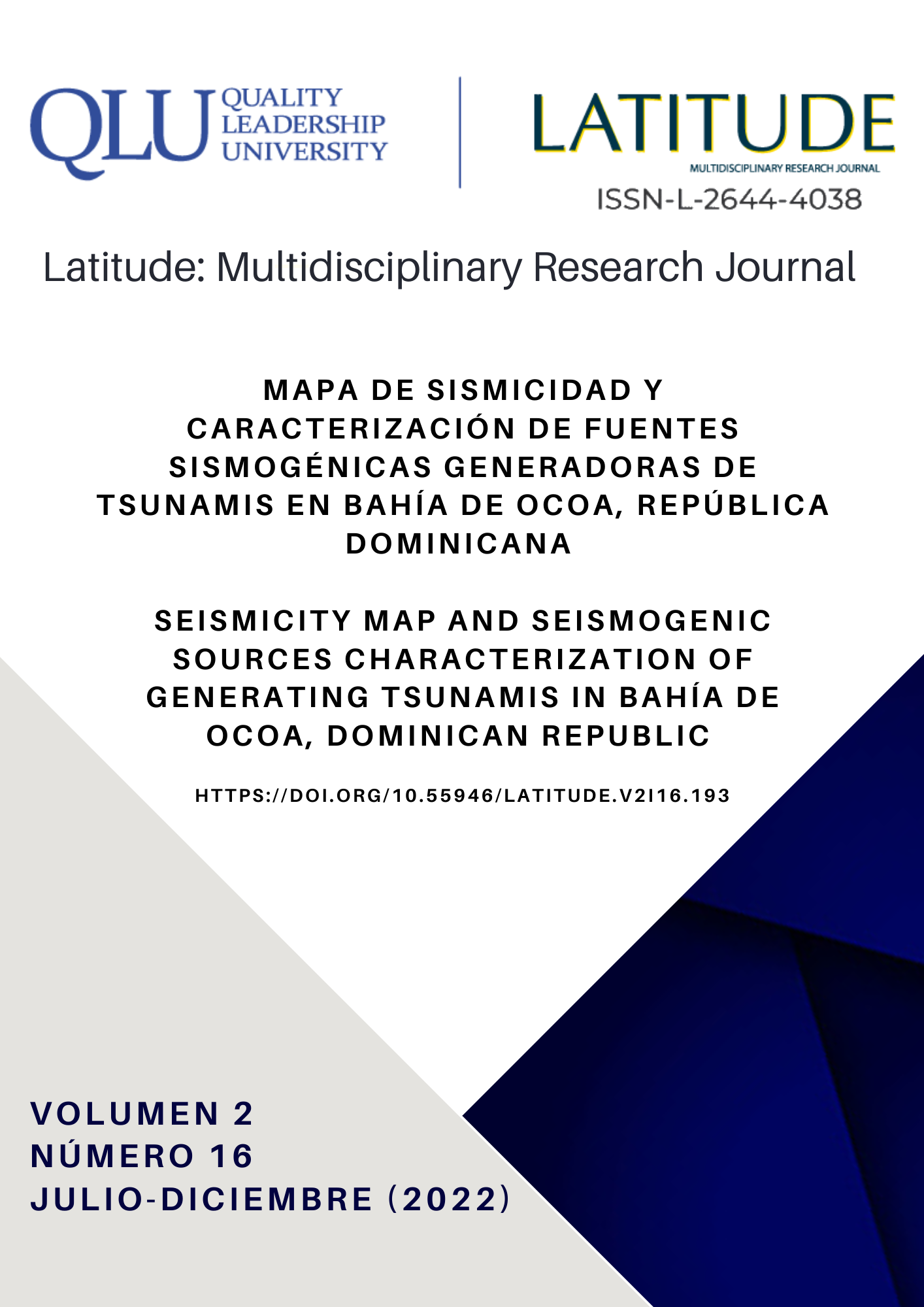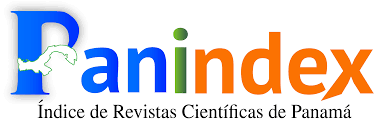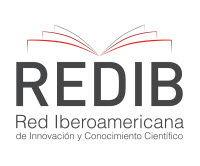

This work is licensed under a Creative Commons Attribution-NonCommercial-ShareAlike 4.0 International License.
Esta obra está bajo licencia internacional https://creativecommons.org/licenses/by-nc-sa/4.0/deed.es
La revista (y sus contenidos) emplean las licencias Creative Commons, específicamente la del tipo CC BY NC SA 4.0, la cual establece que “el beneficiario de la licencia tiene el derecho de copiar, distribuir, exhibir y representar la obra y hacer obras derivadas siempre y cuando reconozca y cite la obra de la forma especificada por el autor o el licenciante”. La licencia del tipo CC BY NC SA 4.0 contempla tres categorías,
- Atribución.
- No Comercialización de la obra.
- Compartir igual
Los lectores son libres de:
- Compartir — copiar y redistribuir el material en cualquier medio o formato
- Adaptar — remezclar, transformar y construir a partir del materialLa licenciante no puede revocar estas libertades en tanto usted siga los términos de la licencia
- Siempre y cuando se respeten y contemplen la atribución de autoría y la no comercialización del material.
Abstract
The Ocoa Bay is exposed to the occurrence of seismic events, that generate tsunamis. Tsunamis events that have occurred in the past, such as October 18, 1751 and May 11, 1910, are clear examples of the destructive potential of tsunamigenic events in the study area. In recent years, economic growth in the region has increased as a resulted of hydrocarbon exploration, mining, and tourism activities, among others, which has led to an increase in population, infrastructure for services, transportation, energy, etc. This causes a concentration of exposed assets to the occurrence of a tsunamigenic events with the potential to cause severe damage. Given this scenario, it is essential to identify flood-hazard zones in case of tsunamis occurrences, which can be represented by tsunami flood hazard maps for different return periods, including events which could potentially occur in the study area or in the simulation of an event with exceptional historical characteristics. For the identification of potentially dangerous zones, seismic data were selected for the elaboration of a local seismic hazard model. Based on this model, an earthquake catalogue of the study area was created and the seismic sources generating tsunamis were characterized according to a seismic zonation classification. Likewise, a map of the distributed seismicity of Ocoa Bay was presented considering the geological structures and local tectonics.
Keywords:
References
Bertil D., Lemoine A., Winter T. and Belvaux M. (2010). Microzonificación sísmica de Santiago – República Dominicana. Amenaza regional. Informe final. BRGM/RC-59107-FR.
Bertil D., Terrier M. and Belvaux M. (2015). Análisis de las fuentes sísmicas y evaluación de la amenaza sísmica regional del Gran Santo Domingo BRGM/RP-65305-FR.
Cornell C.A. (1968). Engineering seismic risk analysis. Bulletin of the Seismological Society of America. 58(5):1583-1606. DOI: https://doi.org/10.1785/BSSA0580051583
Cornell, C. A., and Vanmarke E. H. (1969). The major influences on seismic risk, in Proceedings of the 3rd World Conference on Earthquake Engineering, Santiago, Chile.
ECHO, MOVIMONDO, SODOSISMICA, ONESVIE and UCODEP (2004). Estudio de amenaza sísmica de la República Dominicana. El conocimiento del riesgo como punto de partida para la prevención de desastres en la región norte oriental de la República Dominicana. Report ECHO/TPS/219/2003/2006.
Engdahl E.R. and Villaseñor A. (2002). Global seismicity: 1900-1999. International handbook of earthquake Engineering and seismology. Vol. 81A. ISBN: 0-12-440652-1. DOI: https://doi.org/10.1016/S0074-6142(02)80244-3
Esteva, L. (1967). Criterios para la construcción de espectros para diseño sísmico. 3er Simposio Panamericano de Estructuras. Caracas, Venezuela.
Gardner J.K. and Knopoff L. (1974). Is the sequence of earthquakes in Southern California with aftershocks removed, Poissonian? Bulletin of the Seismological Society of America. 64:1363-1367. DOI: https://doi.org/10.1785/BSSA0640051363
Hayes G.P., Moore G.L., Portner D.E., Hearne M., Flamme H., Furtney M. and Smoczyk G.M. (2018). Slab2, a comprehensive subduction zone geometry model. Science. 362(6410):58-61. DOI: https://doi.org/10.1126/science.aat4723
Manaker D.M., Calais E., Freed A.M., Ali S.T., Przybylski P., Mattioli G., Jansma P., Prépetit C. and De Chabalier J.B. (2008). Interseismic plate coupling and strain partitioning in the Northeastern Caribbean. Geophysical Journal International. 174(3):889-903. DOI: https://doi.org/10.1111/j.1365-246X.2008.03819.x
McGuire R.K. (2004). Seismic hazard and risk analysis. Earthquake Engineering Research Institute. Oakland, California, USA.
Oficina Nacional de Estadística. (2010).
Ordaz M. (2000). Metodología para la evaluación del riesgo sísmico enfocada a la gerencia de seguros por terremoto. Universidad Nacional Autónoma de México. Mexico City, Mexico.
Ordaz M. and Giraldo S. (2018). Joint maximum likelihood estimators for Gutenberg-Richter parameters λ0 and β using sub-catalogs. Earthquake Spectra. 18(1):301-312. DOI: https://doi.org/10.1193/092816EQS162M
Ordaz M., Martinelli F., Aguilar A., Arboleda J., Meletti C. and D’Amico V. (2020). R-CRISIS, Program for computing seismic hazard. Instituto de Ingeniería. Universidad Nacional Autónoma de México, Mexico City, Mexico.
Ordaz, M.G. and Salgado-Gálvez, M.A. (2020). R-CRISIS Validation and Verification Document. ERN International, Mexico City, Mexico.
Rodríguez-Zurrunero A., Granja-Bruña J.L., Muñoz-MartínA., Leroy S., ten Brink U., Gorosabel-Araus J.M., Gómez de la Peña L., Druet M. and Gorosabel-Carbó A. (2020). Along-strike segmentation in the northern Caribbean plate boundary zone (Hispaniola sector): Tectonic implications. Tectonophysics. 776. DOI: https://doi.org/10.1016/j.tecto.2020.228322
Scordilis E.M. (2006). Empirical global Relations converting Ms and mb to moment magnitude. Journal of seismology. 10:225-236. DOI: https://doi.org/10.1007/s10950-006-9012-4
Singh S.K., Bazan E. and Esteva L. (1980). Expected earthquake magnitude from a fault. Bulletin of the Seismological Society of America. 70(3):903-914. DOI: https://doi.org/10.1785/BSSA0700030903
Singh S.K., Rodriguez M. and Esteva L. (1983). Statistics of small earthquakes and frequency of occurrence of large earthquakes along the Mexican subduction zone. Bulletin of the Seismological Society of America. 73(6):1779-1796.
Storchak D.A., Di Giacomo D., Bondár I., Engdahl E.R., Harris J., Lee W.H.K., Villaseñor A. and Bormann P. (2013). Public release of the ISC-GEM Global Instrumental Earthquake Catalogue (1900-2009). DOI: https://doi.org/10.1785/0220130034
Tinti S. and Mulargia F. (1985). An improved method for the analysis of the completeness of a seismic catalogue. Lettere al nuovo cimento. Series 2. 42(1):21-27. DOI: https://doi.org/10.1007/BF02739471
Wells D.L. and Coppersmith K.J. (1994). New empirical relationships among magnitude, rupture length, rupture width, rupture area and surface displacement. Bulletin of the Seismological Society of America. 84(4):974-1002.
Youngs R.R. and Coppersmith K. (1985). Implications of fault slip rates and earthquake recurrence models to probabilistic seismic hazard estimates. Bulletin of the Seismological Society of America. 58:939-964.
















